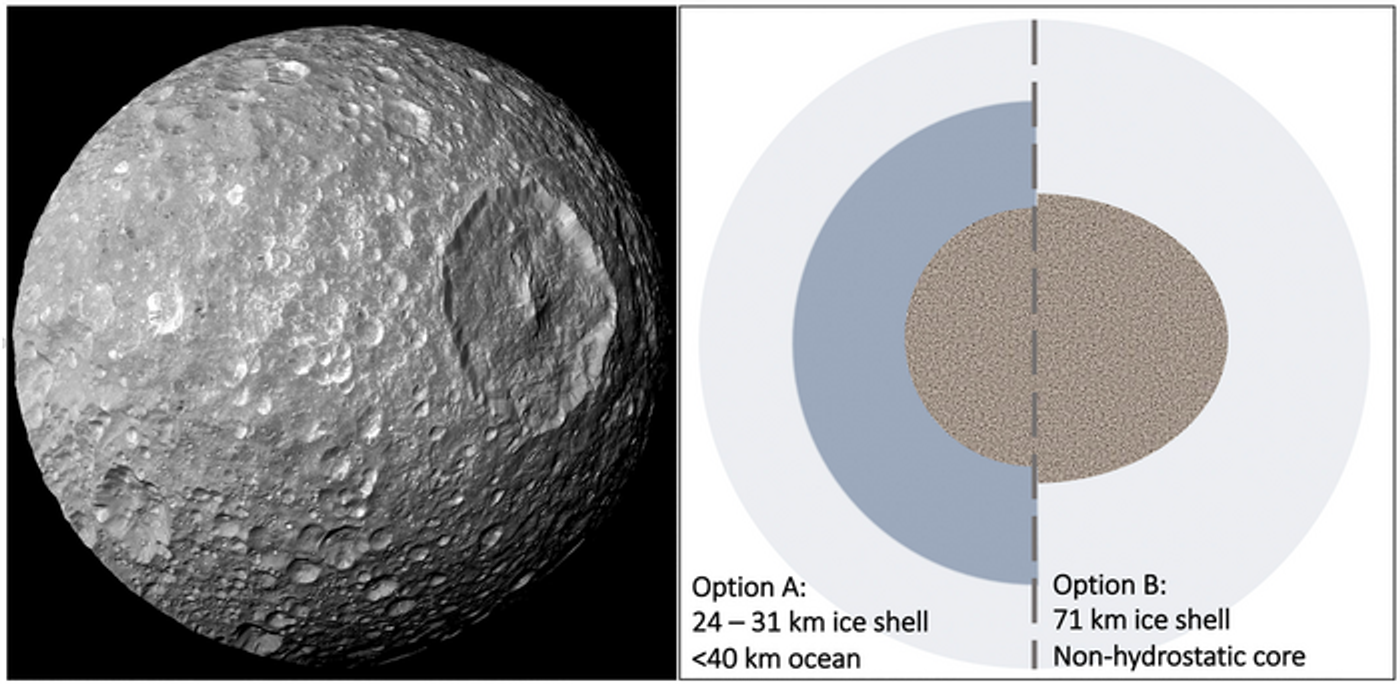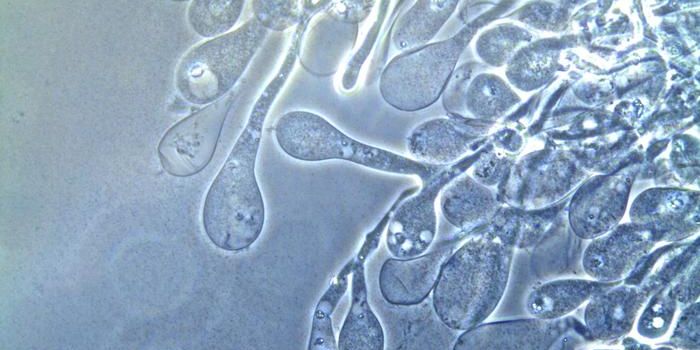Saturn's Moon, Mimas, Could Be an Ocean World After All
Ocean worlds are becoming a hot topic in the fields of planetary science and astrobiology, as Jupiter’s moon, Europa, and Saturn’s moon, Enceladus, could possibly host life within their watery depths. But another one of Saturn’s moons, Mimas, could also host an internal ocean that was previously overlooked.
This new insight was addressed in a recent study published in Geophysical Research Letters, as a pair of researchers from Purdue University and the Southwest Research Institute (SwRI) examine the likelihood of Saturn’s smallest and innermost moon, Mimas, harboring an interior ocean, despite previous evidence to the contrary, including its small size, absence of geologic activity, and highly eccentric orbit around Saturn. Specifically, the researchers studied Herschel Crater, which is the most prominent feature on the small moon and allows Mimas to draw comparisons to the Death Star of Star Wars.
Mimas' heavily bombarded and createred surface (left) suggests a frozen evolutionary history, but its librations, or socillations, rule out a uniforminterior. Rather, Mimas must possess a rocky interior and outer water mass, which could include a liquid ocean (Option A) or be completely frozen with an oddly shaped core (Option B). Recent research speculates an ocean provides a better fit to the phase of the oscillations but is difficult to compromise with Mimas’ geology. (Credit: NASA/JPL-Caltech/Space Science Institute/Southwest Research Institute)
“In the waning days of NASA’s Cassini mission to Saturn, the spacecraft identified a curious libration, or oscillation, in Mimas’ rotation, which often points to a geologically active body able to support an internal ocean,” said Dr. Alyssa Rhoden, who is a principal scientist at SwRI and specializes in the geophysics of ocean worlds and the evolution of gas planet moons, and a co-author on the study. “Mimas seemed like an unlikely candidate, with its icy, heavily cratered surface marked by one giant impact crater that makes the small moon look much like the Death Star from Star Wars. If Mimas has an ocean, it represents a new class of small, ‘stealth’ ocean worlds with surfaces that do not betray the ocean’s existence.”
For the study, Dr. Rhoden collaborated with Dr. Adeene Denton, who is now a postdoctoral researcher at the University of Arizona but was a PhD student at Purdue for the study. Using computer models, Denton was able to determine the formation mechanisms behind Herschel Crater, and demonstrated the ice shell of Mimas was at least 34 miles (55 kilometers) thick when the crater was formed from a large impact. Using present-day observations and computer models, Denton also determined the current ice shell thickness on Mimas is less than 19 miles (30 kilometers), if the moon currently possesses an internal ocean.
“We found that Herschel could not have formed in an ice shell at the present-day thickness without obliterating the ice shell at the impact site,” said Dr. Denton, who is lead author of the study. “If Mimas has an ocean today, the ice shell has been thinning since the formation of Herschel, which could also explain the lack of fractures on Mimas. If Mimas is an emerging ocean world, that places important constraints on the formation, evolution and habitability of all of the mid-sized moons of Saturn.”
What new discoveries will scientists make about Mimas in the coming years and decades? Only time will tell, and this is why we science!
Sources: NASA, NASA (1), Geophysical Research Letters, Southwest Research Institute
As always, keep doing science & keep looking up!









